Duplicate Content Checker: Your Efficient Solution for Unique Writing
Ashley Merit
Content writer and editor for Netus.AI
Table of Contents
Duplicate Content Checker. Plagiarism, the act of using others’ work without proper consent or acknowledgment, is a growing concern in both academia and various professions. Not only is it unethical, but it also denies originators the credit they deserve for their hard work. Whether committed intentionally or accidentally, plagiarism carries significant consequences in academic and professional spheres. Students may face academic setbacks, while professionals could experience reputational and financial losses.
As content creators and writers, it is crucial to understand and avoid plagiarism in your work. Familiarize yourself with various duplicate content checkers that help detect copied content and ensure your writing stays original and unique. By following ethical writing practices and proper citation techniques, you can maintain professionalism, integrity, and respect for other creators.
Key Takeaways
- Plagiarism has serious consequences in both academic and professional settings
- Utilize duplicate content checkers to preserve the originality and uniqueness of your work
- Employ proper citation practices and ethical writing methods to maintain professionalism and avoid plagiarism
Is There Any Difference Between Duplicate and Copied Content?
While there is a subtle distinction between duplicate content and copied content, search engines apply similar penalties to both. Duplicate content identifies similar material across multiple domains, with search engines potentially penalizing websites for hosting duplicated text.
Meanwhile, copied content refers to content that is an exact replica or very close imitation of the original, typically taken from one or multiple websites. Such content is easily detectable and identifiable using duplicate content checker tools.
- Duplicate content: Content duplicated across multiple domains.
- Copied content: An exact or near-exact replica of content from another domain.
Key Insights About Duplicate Content Checkers
Duplicate content checkers employ advanced tools and software to effectively address plagiarism and copied content issues. These checkers help identify when the same content is duplicated across one or more website pages. Some popular online tools include Copyscape, PlagSpotter, and Sitechecker, which offer:
- Plagiarism scanning: Reliable scanning of content for similarities.
- Free and API options: Availability of free plagiarism checkers and APIs for integration.
- Detailed reports: Comprehensive plagiarism reports to spot and rectify issues.
Understanding How Duplicate Checkers Function
Duplicate checkers employ various methods to detect plagiarism, including analyzing URLs, comparing content with pre-loaded data and search engine indices, and utilizing artificial intelligence technology. Here are some key features of these tools:
- URL analysis: By inputting URLs, users can check the similarity between two pages, identifying identical content.
- Source tracking: These tools help locate the source site and compare its content with the current page to determine if copying has occurred.
- Comparing documents: Duplicate checkers can effectively detect plagiarism between two documents.
- Result generation: After comparison, the software highlights similar or repeated words and sentences, providing an accuracy percentage.
- Artificial intelligence: Advanced AI technology ensures user-friendly, precise plagiarism detection.
These features enable users to maintain content originality and avoid potential penalties due to duplicate content.
Copied Content Can Harm Your Website’s Rankings
Duplicate content on web pages, blogs, and articles can significantly impact a website’s ranking and brand reputation. Search engines like Google often penalize websites that have duplicated content by lowering their rankings. Additionally, search engines function as duplicate checkers to detect the original source URL and may redirect users to that original site, impacting user experience.
To maintain a better website ranking, it is crucial to avoid plagiarism. Content creators sometimes make minor alterations to external sources, and combining multiple sources may make it more challenging to identify the original. However, even these small changes can be detected by duplicate content checker tools.
Paraphrasing tools are often used by writers to summarize others’ work and incorporate it into their content. To protect your website ranking and brand image, ensure that all content is original, well-cited, and demonstrates a confident, knowledgeable, and clear tone.
Search Engines Prefer Unique Content
Websites often rely on unique SEO content to promote their brand and increase awareness due to its cost-effectiveness compared to online advertising. Original content is necessary for optimizing search results and enhancing website performance. Consequently, content creators may use online tools to ensure the quality of their work by identifying potential duplicate content.
Poorly created or copied content can hinder a website’s optimization efforts, so website owners need to be vigilant in protecting their original content. One approach is to secure copyright for the content, which offers legal protection against unauthorized access and plagiarism. To claim copyright, website operators must provide ample evidence that the content was initially developed by them.
It is essential for websites to prioritize original work in order to keep up with search engines like Google, which reward unique content and value it highly in their ranking algorithms. By emphasizing top-quality, original content, websites can establish their brand and maintain a strong online presence.
The Dangers of Ineffective Paraphrasing in Plagiarism
Inadequate paraphrasing may lead to unintended plagiarism, as people often mistakenly consider paraphrasing and summarizing as surefire methods to avoid plagiarism. However, merely using synonyms or using a chatgpt rephraser for a few words doesn’t guarantee originality. Even borrowing others’ ideas, images, videos, or user-generated content without proper attribution contributes to plagiarism.
To maintain academic integrity and prevent accidental plagiarism, writers should possess a strong understanding of citation techniques. Skillful citations, such as parenthetical references and bibliographies, help attribute external resources, thus eliminating the risk of plagiarism.
How to Prevent Replicating Content in Various Forms of Writing
To avoid duplicated content, those responsible for creating content should focus on developing unique material. Writers, students, researchers, and organizations need to gather information, perform thorough research, and understand the subject matter before starting the writing process. For better SEO, ensure that target keywords are strategically placed within the content.
Proofreading and editing are crucial steps before publishing, as this helps eliminate any errors in grammar, spelling, or sentence construction. Content writers, webmasters, and authors should also utilize online plagiarism checker tools to cross-reference their work, thus minimizing unintentional plagiarism. These tools help to identify and correct any instances of plagiarism, ultimately enhancing the quality of the content.
Frequently Asked Questions
What are some dependable tools for checking duplicate content online?
There are several reliable tools available for detecting duplicate content online. Some popular ones include:
- Copyscape
- Plagiarism Detector
- Grammarly
- Duplichecker
- Quetext
- Anti ChatGPT Tool
How can I ensure my website content is original?
To verify the uniqueness of your website content, consider using one of the above-mentioned duplicate content checker tools. Additionally, perform a manual check by:
- Selecting a sentence or phrase from your content.
- Enclosing it in quotation marks
- Running a search on Google using the enclosed text.
If only your website appears in the search results, then it is likely that your content is unique.
What strategies help identify plagiarism in academic writing?
There are several methods to detect plagiarism in academic writing, including:
- Checking against databases of published works, such as Google Scholar and academic libraries.
- Utilizing plagiarism detection software like Turnitin or Grammarly.
- Manually comparing the student’s text to the cited sources.
- Observing writing style consistency throughout the paper.
Are there complimentary tools for detecting duplicate content?
Yes, there are free tools available for identifying duplicated content. These include:
- Duplichecker
- Studyhippo Duplicate Content Checker
- Small SEO Tools Plagiarism Checker
How does duplicated content impact search engine optimization (SEO)?
Duplicate content can negatively affect SEO because search engines like Google may:
- Penalize websites for having duplicated content.
- Struggle with identifying the original source of content, leading to a reduction in the visibility of your website in search results.
- Cause search engines to divide the value of your website’s content across multiple duplicate pages, reducing the overall ranking potential.
Is there a Microsoft Excel tool to detect text plagiarism?
Microsoft Excel does not have a built-in tool specifically designed for plagiarism detection. However, it is possible to use Excel’s text functions and conditional formatting features to identify duplicate text within an Excel document. For comprehensive plagiarism detection, it is best to use one of the previously mentioned tools.
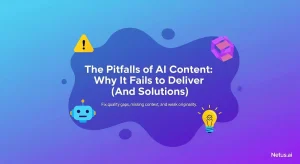
The shortcomings of content generated by AI | NetusAI
Discover why fast, high-volume AI content often fails to deliver real results. Learn about the crucial missing feedback loop and how implementing performance tracking can transform your AI content strategy.
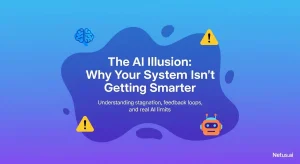
The illusion of AI: Your system's intelligence gap | NetusAI
Stop wasting marketing spend! Most AI tools don’t learn from results, causing content stagnation and low engagement. Discover why your generative AI isn’t getting smarter and what system actually learns and optimizes content.
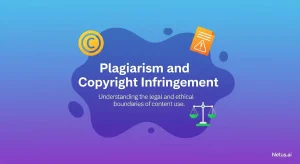
Plagiarism and copyright infringement | NetusAI
Learn the distinct differences between plagiarism and copyright infringement. Understand the ethical and legal implications and get practical strategies for avoiding both academic and creative work with NetusAI.

Tips and strategies for mobile content marketing | NetusAI
Optimized for mobile-first indexing, learn 5 essential strategies to capture attention, enhance engagement and drive leads and sales with your mobile content marketing.
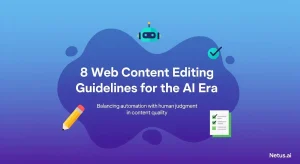
Web content editing guidelines for the AI era | NetusAI
Review web content editing guidelines for the AI era. Learn how to edit AI-generated content, ensure authenticity and optimize for SEO and readability.
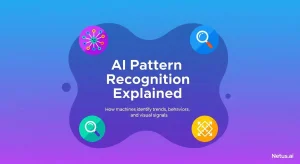
Explaining AI pattern recognition | NetusAI
AI pattern recognition enables machines to identify trends for diverse applications, from detecting plagiarism to fraud. Discover its processes, models and real-world benefits.
